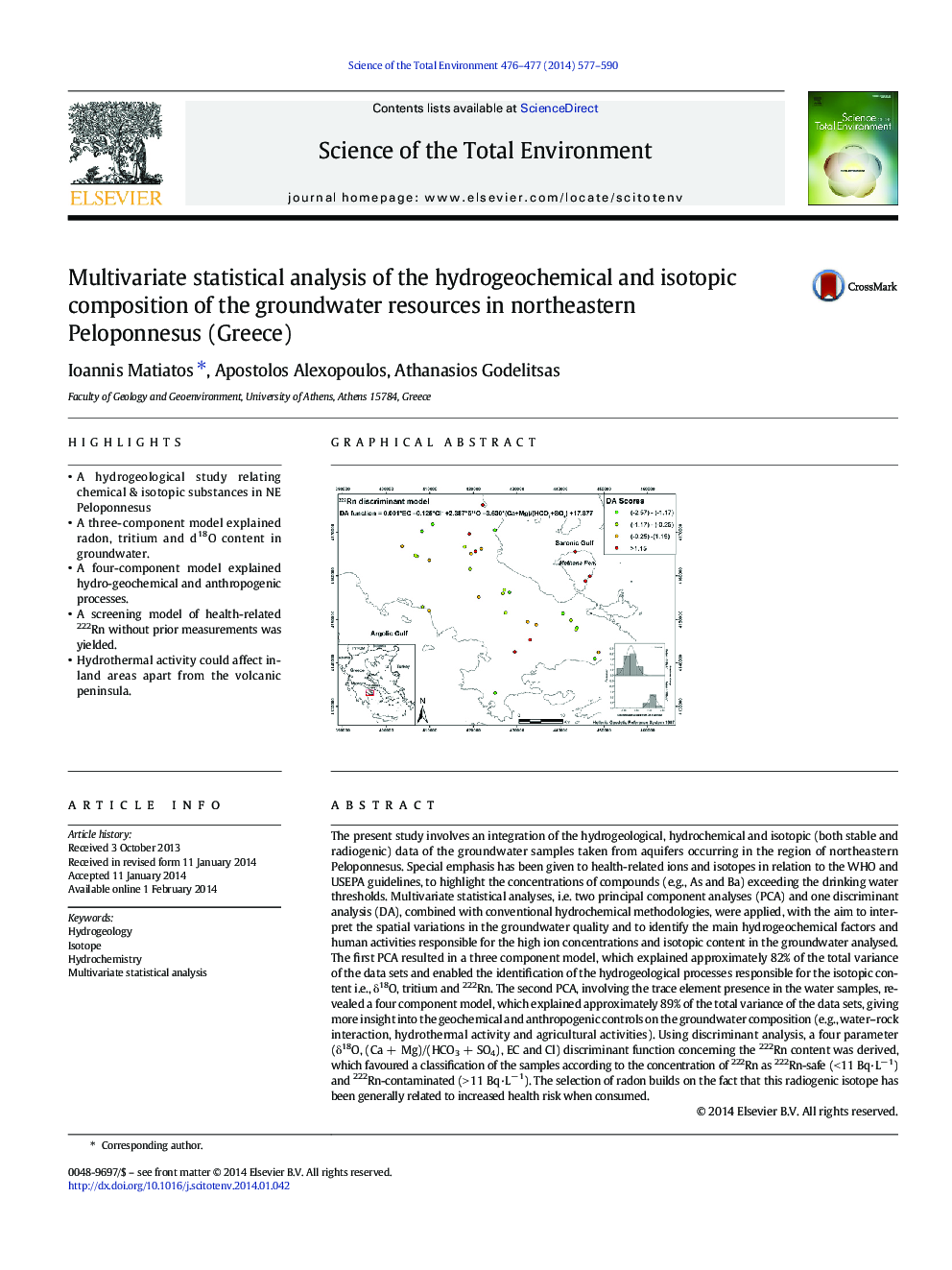| کد مقاله | کد نشریه | سال انتشار | مقاله انگلیسی | نسخه تمام متن |
|---|---|---|---|---|
| 4428573 | 1619789 | 2014 | 14 صفحه PDF | دانلود رایگان |

• A hydrogeological study relating chemical & isotopic substances in NE Peloponnesus
• A three-component model explained radon, tritium and d18O content in groundwater.
• A four-component model explained hydro-geochemical and anthropogenic processes.
• A screening model of health-related 222Rn without prior measurements was yielded.
• Hydrothermal activity could affect inland areas apart from the volcanic peninsula.
The present study involves an integration of the hydrogeological, hydrochemical and isotopic (both stable and radiogenic) data of the groundwater samples taken from aquifers occurring in the region of northeastern Peloponnesus. Special emphasis has been given to health-related ions and isotopes in relation to the WHO and USEPA guidelines, to highlight the concentrations of compounds (e.g., As and Ba) exceeding the drinking water thresholds. Multivariate statistical analyses, i.e. two principal component analyses (PCA) and one discriminant analysis (DA), combined with conventional hydrochemical methodologies, were applied, with the aim to interpret the spatial variations in the groundwater quality and to identify the main hydrogeochemical factors and human activities responsible for the high ion concentrations and isotopic content in the groundwater analysed. The first PCA resulted in a three component model, which explained approximately 82% of the total variance of the data sets and enabled the identification of the hydrogeological processes responsible for the isotopic content i.e., δ18Ο, tritium and 222Rn. The second PCA, involving the trace element presence in the water samples, revealed a four component model, which explained approximately 89% of the total variance of the data sets, giving more insight into the geochemical and anthropogenic controls on the groundwater composition (e.g., water–rock interaction, hydrothermal activity and agricultural activities). Using discriminant analysis, a four parameter (δ18O, (Ca + Mg)/(HCO3 + SO4), EC and Cl) discriminant function concerning the 222Rn content was derived, which favoured a classification of the samples according to the concentration of 222Rn as 222Rn-safe (< 11 Bq·L− 1) and 222Rn-contaminated (> 11 Bq·L− 1). The selection of radon builds on the fact that this radiogenic isotope has been generally related to increased health risk when consumed.
Figure optionsDownload as PowerPoint slide
Journal: Science of The Total Environment - Volumes 476–477, 1 April 2014, Pages 577–590